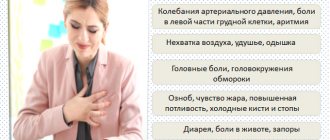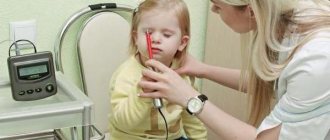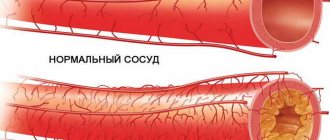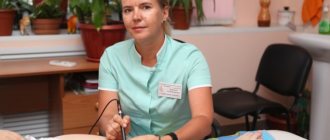If you search on the Internet “what is transcranial magnetic brain stimulation ”, you will probably come across different opinions regarding it.
The Food and Drug Administration first approved transcranial magnetic stimulation as a treatment in 2008. It is intended to relieve symptoms of “moderately treatment-resistant depression.” Transcranial magnetic stimulation (or TMS) therapy and research have come a long way.
For people suffering from depression, TMS offers a safe, non-invasive option for finding relief. Depression is now the leading cause of disability among people aged 15 to 44. Today, TMS is used to treat not only patients who have not found relief from antidepressants, but also those who suffer from schizophrenia. As well as chronic pain, symptoms caused by stroke, ALS and other ailments.
Transcranial magnetic stimulation of the brain: reviews
Transcranial magnetic stimulation of the brain in Moscow is a relatively new and very promising direction in medicine. Using this method, it is possible to map different cortical representations, which in itself is extremely important for understanding the functional organization of the human brain, as well as the mechanisms of its control.
Transcranial magnetic stimulation of the brain makes it possible to accurately determine the boundaries of the location of various brain functions, for example, the cortical representation of visual analyzers, speech centers, and memory.
Reviews of transcranial magnetic stimulation among doctors in Moscow and other Russian cities are positive, since the procedure allows the development of new approaches to the rehabilitation of patients with neurological diseases.
The procedure is very accurate, informative, effective and painless. The technique allows many people to get rid of serious diseases.
How does this method work?
The apparatus for carrying out the procedure was created based on the concept that when a current passes through an inductor, a magnetic field is generated. The device has a fairly strong magnetic field that can affect the human body. This device works as follows:
- as a result of the generation of current pulses in the device block, the capacitor is discharged when the high-voltage signal is closed;
- under the influence of high current and high voltage, a strong magnetic field arises;
- all currents are directed to the inductor, which is located on the hand probe;
- The probe is placed near the scalp, which allows the magnetic field to be transmitted to the cerebral cortex. The field power is about 4 Tesla.
Modern inductors are equipped with special devices for forced cooling, since eddy currents heat them up greatly, and if they touch human skin, a burn can occur.
The device's power of 4 Tesla is quite a lot. In a high-field magnetic resonance imaging scanner, the power is no more than 3 Tesla. This value can be compared to the large dipole magnets in the hadron collider.
To stimulate the cerebral cortex, different modes are used: single-phase, biphasic and others. They can select an inductor coil that will allow you to control the depth of exposure to the magnetic field.
In this case, electrical impulses are generated in the cortex, and neuron membranes are depolarized. Thanks to TMS, you can influence different parts of the brain and get different responses.
After transcranial electrical stimulation of the brain has been performed, the results of the study must be deciphered. After sending impulses to the patient, the following is revealed:
- minimum motor response threshold;
- response threshold amplitude;
- delay time and other physiological indicators.
In the process of exposure to the cerebral cortex, contraction of the body muscles can be observed.
Cyclic transcranial magnetic stimulation of the brain
The technique is indicated for children with pathologies such as autism, encephalopathy with delayed speech development, and attention deficit hyperactivity disorder. The complex of transcranial magnetic stimulation and drug therapy helps improve speech, it becomes clearer, vocabulary increases, and children’s cognitive interest increases. Patients leave positive reviews about the effectiveness of the procedure.
At the Yusupov Hospital, neurologists use transcranial magnetic stimulation to treat complex diseases in adult patients aged 18+.
TMS has proven effective in treating depression, schizophrenia, and post-traumatic stress disorder.
Contraindications
Transcranial stimulation cannot be performed in many cases. An absolute contraindication is the presence of metal in the human body, for example, a pacemaker. There are other groups of contraindications:
- Pregnancy.
- Patients at risk of seizures: focal epilepsy, encephalopathy, traumatic brain injury, alcoholism and drug addiction, long-term use of antidepressants, antipsychotics and anticonvulsants.
- Built-in metal devices: cochlear hearing aid, implanted pumps, implanted devices in the brain.
Rhythmic transcranial magnetic stimulation
Rhythmic transcranial magnetic stimulation is a proven effective method for treating a number of diseases of the nervous system, successfully used in the Yusupov Hospital.
The technique is used in the treatment of the following pathologies:
- post-stroke pain syndrome;
- Parkinson's disease stage 3;
- trigeminal neuralgia;
- migraine;
- neuropathic pain;
- multiple sclerosis;
- spinal injury;
- tinnitus and others.
The clinical effect is observed after 10 therapy sessions, for depression - after 20. Experienced neurologists at the Yusupov Hospital, in combination with transcranial magnetic stimulation, depending on the individual characteristics of the patient’s body, can also prescribe medication and physical therapy.
Main advantages
TMS has many benefits. This procedure is popular due to the fact that:
- It allows you to obtain an objective assessment of the state of various parts of the brain, which were previously quite problematic to study.
- During the study, it is possible to regulate the depth of impact on the human central nervous system.
- The patient does not feel pain during the procedure, since the magnetic stimulator coil does not contact the body. This is one of the main advantages of TMS compared to other methods of electrical stimulation.
- After the study, people rarely experience any unpleasant symptoms. But only if the specialist has correctly selected the frequency and strength of the impact. If the heart rhythm is not disturbed, the level of hormones in the blood does not increase or decrease, the pressure in the arteries and other indicators do not exceed acceptable values, then the procedure was carried out according to all the rules.
If you act once and rhythmically on the cerebral cortex, there will be no seizures or epilepsy.
An important stage in the development of transcranial micropolarization is the appearance of repetitive and rhythmic stimulation. These techniques make it possible to timely identify and treat many pathologies of the nervous system.
Transcranial magnetic stimulation: contraindications to its implementation
The method is not possible if the patient is suspected of having a cerebral aneurysm, has a pacemaker, or is pregnant. When diagnosing epilepsy, the method should be used with extreme caution, since transcranial brain stimulation can trigger the development of an attack.
Medicine does not stand still; scientific research is carried out every day, thanks to which new effective methods for treating many diseases emerge.
The Yusupov Hospital is equipped with modern medical equipment that allows the latest proven diagnostic and treatment methods to be applied in practice.
The hospital staff includes leading Russian doctors who are ready 24 hours a day, 7 days a week to provide patients with high-quality medical care that meets European standards. You can make an appointment at the hospital by phone.
Author
Olga Vladimirovna Boyko
Neurologist, Doctor of Medical Sciences
Technique of TES therapy
Before using transcranial electrical stimulation to treat any disease, it is necessary to consult a physiotherapist and a neurologist. Therapy should not be performed immediately after eating; the interval between eating and the session should be at least two hours.
During TES therapy, the patient needs to lie down or sit, and the specialist places electrodes on the patient’s forehead, on the back of the head and on the nipples. Before applying the electrodes, the patient's skin is thoroughly cleaned and checked for damage, formations or rashes.
Ear jewelry should be removed during TES therapy. During the procedure, the patient may feel a slight vibration, tingling in the area where the electrodes are applied, and may also observe light flickering with their eyes closed. Electrodes do not leave marks on the skin.
To carry out the manipulation, special pulsed low-amplitude currents with a rectangular bipolar pulse shape are used. During the first procedure, the minimum current reading should be used, which should not be increased even if the patient does not have any third-party sensations. In subsequent sessions, the current levels are gradually increased until the patient begins to feel their presence. If discomfort is detected, the specialist should reduce the supplied current. Gradually, towards the end of the procedure, the current strength should be reduced to zero.
The patient should experience the above sensations, but they should not be unpleasant to him. In this way, the optimal current strength is regulated, and if it bears fruit in the form of positive results, then during further sessions the specialist will use exactly this current, without changing it upward.
If the patient has severe pain, then similar procedures can be performed several times a day with an interval of at least 4-6 hours. If the pain does not disappear, the patient is advised to undergo additional medical consultation and examination.
Currents affect the alpha rhythms of the human brain at a frequency of 70-80 hertz, stimulating the production of endogenous opioid peptides. After the session, those who suffer from blood pressure disorders are advised to rest for fifteen minutes and undergo a neck-collar massage. The duration of one procedure of transcranial electrical stimulation is 20 minutes, although in case of severe pain this time can be increased. The course of therapy usually includes about 15 sessions. In case of exacerbation of chronic diseases, TES therapy is aimed at relieving emerging symptoms, which can be done in 5 procedures. In 1 calendar year, it is permissible to conduct up to 60 sessions, repeating courses every 2-3 months.
How is TES performed and on what device?
Just a few years ago, the procedure could only be carried out within the walls of a medical institution under the supervision of a doctor, but now, thanks to modern developments, a new device has appeared - the alfariya transcranial electrical stimulation device.
The principle of operation of this device is based on stimulating the alpha rhythms of the brain, restoring the normal functioning of other biorhythms, increasing the concentration of serotonin, acetylcholine, met-enkephalin and beta-endorphins.
The device is based on precision technology, thanks to which it is possible to generate a complex sequence of current pulses.
The transcranial electrical stimulation device is an excellent alternative to medications, especially in cases where long-term treatment is required. During the procedure, the patient feels pleasant relaxation, lightness throughout the body and clarity of thinking. The device is easy to use, therefore it is recommended for both medical institutions and home use.
It is used for various pathologies, including gynecology.
TMS treatment
The influence of a magnetic field on brain cells leads to an improvement in the process of transmitting impulses from neuron to neuron. Thanks to this, brain processes are activated if a person suffers from asthenia or depression, or slow down when feeling anxiety or panic.
TMS acts on the body as an antidepressant. It helps increase the production of serotonin and endorphin in the body. As a result:
- The instability of the autonomic nervous system to environmental influences is reduced.
- Sleep normalizes and insomnia goes away.
- Your mood improves.
- The level of anxiety and fear decreases.
- Blood pressure levels return to normal.
- Muscle tension decreases.
- Memory and attention improves.
- A person becomes more active and energetic, efficiency increases, and fatigue decreases.
Even the shortest impulse is responsible for transmitting the energy needed by nerve cells. Without this energy, the nervous system of a modern person cannot work normally under conditions of psycho-emotional stress.
Thanks to the effects of transcranial magnetic stimulation, the conduction system of the brain and spinal cord recovers faster after strokes and injuries, muscle tone and sensitivity increase, and pain goes away. Thanks to transcranial electrical stimulation, a person's life can be significantly improved. But you can undergo such treatment only in the complete absence of contraindications.











